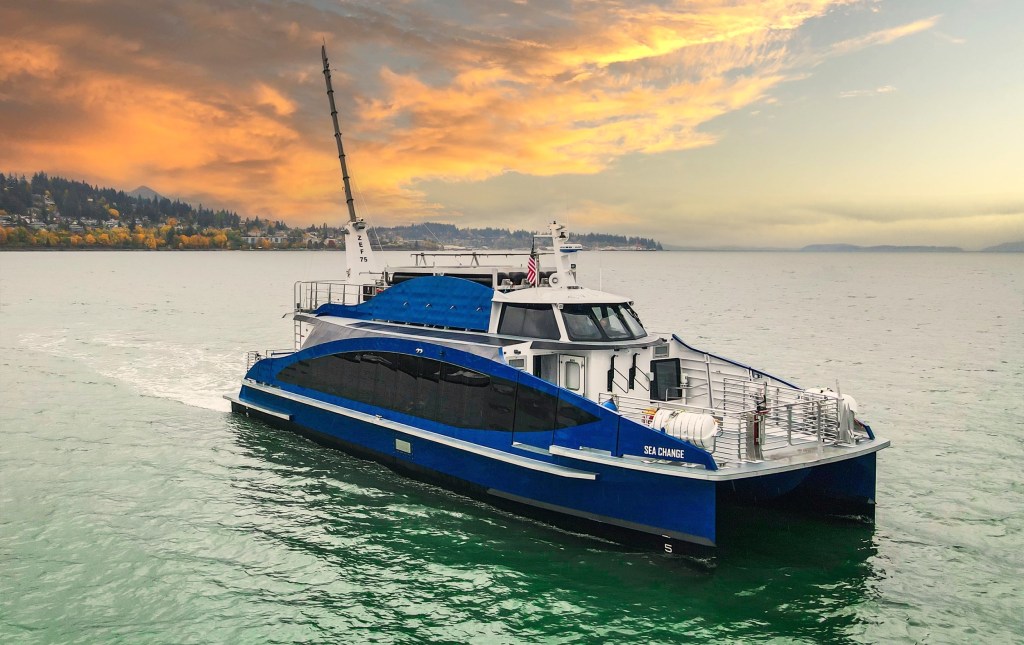San Francisco has a range of public transit options, from BART to the iconic cable cars. And starting this week, the nation’s first hydrogen-fueled commercial passenger ferry will also be in the mix.
“It’s all electric drive,” Joe Pratt, CEO of Zero Emission Industries, told Fast Company. “What that means is you don’t have the engine noise. You don’t have the vibration. It’s kind of like a really big sailboat that’s just cruising silently through the bay.” Pratt, whose company designed the boat, added that its sole byproduct is water vapor: “It’s the only vessel in the world where you can actually drink the exhaust.”
And that isn’t a hypothetical — the ship remineralizes and reroutes that water vapor to both drinking fountains and bathrooms on board.
The ferry is the latest in a series of seafaring vehicles that have been embracing hydrogen as a power source. If you’re unfamiliar with how the technology works, here’s a brief breakdown: hydrogen is stored in containers on the ship and then sent to fuel cells, which convert the substance into electricity. In this case, the power then goes below deck to an electric motor that spins the propeller.
Running on hydrogen costs more than running on diesel, but that could change in the next decade or so, John Motlow, Zero Emission Industries’ chief strategy office, explained to the outlet. “If you look at the next 10 years, there’s a very good chance that the price per kilogram of hydrogen will be cheaper than the price of a gallon of diesel.”
Beginning July 19, the 70-foot catamaran, called the MV Sea Change, will be taking up to 75 passengers at a time along the waterfront between Pier 41 and the San Francisco Ferry Building. Not only is the vessel innovative and eco-friendly, but it’s also free for the first six months as part of a pilot program.

“The implications for this are huge because this isn’t its last stop,” Jim Wunderman, chair of the San Francisco Bay Area Water Emergency Transportation Authority, told the Associated Press. “If we can operate this successfully, there are going to be more of these vessels in our fleet and in other folks’ fleets in the United States, and we think in the world.”
Per the outlet, the shipping industry accounts for nearly 3% of the world’s total greenhouse gas emissions. Though that’s not as much as cars, trucks, trains, or the aviation industry, the number is rising, so greener additions could make a significant difference.
Said Frank Wolak, president and CEO of the Fuel Cell & Hydrogen Energy Association: “The real value of this is when you multiply out by the number of ferries operating around the world. There’s great potential here.”












